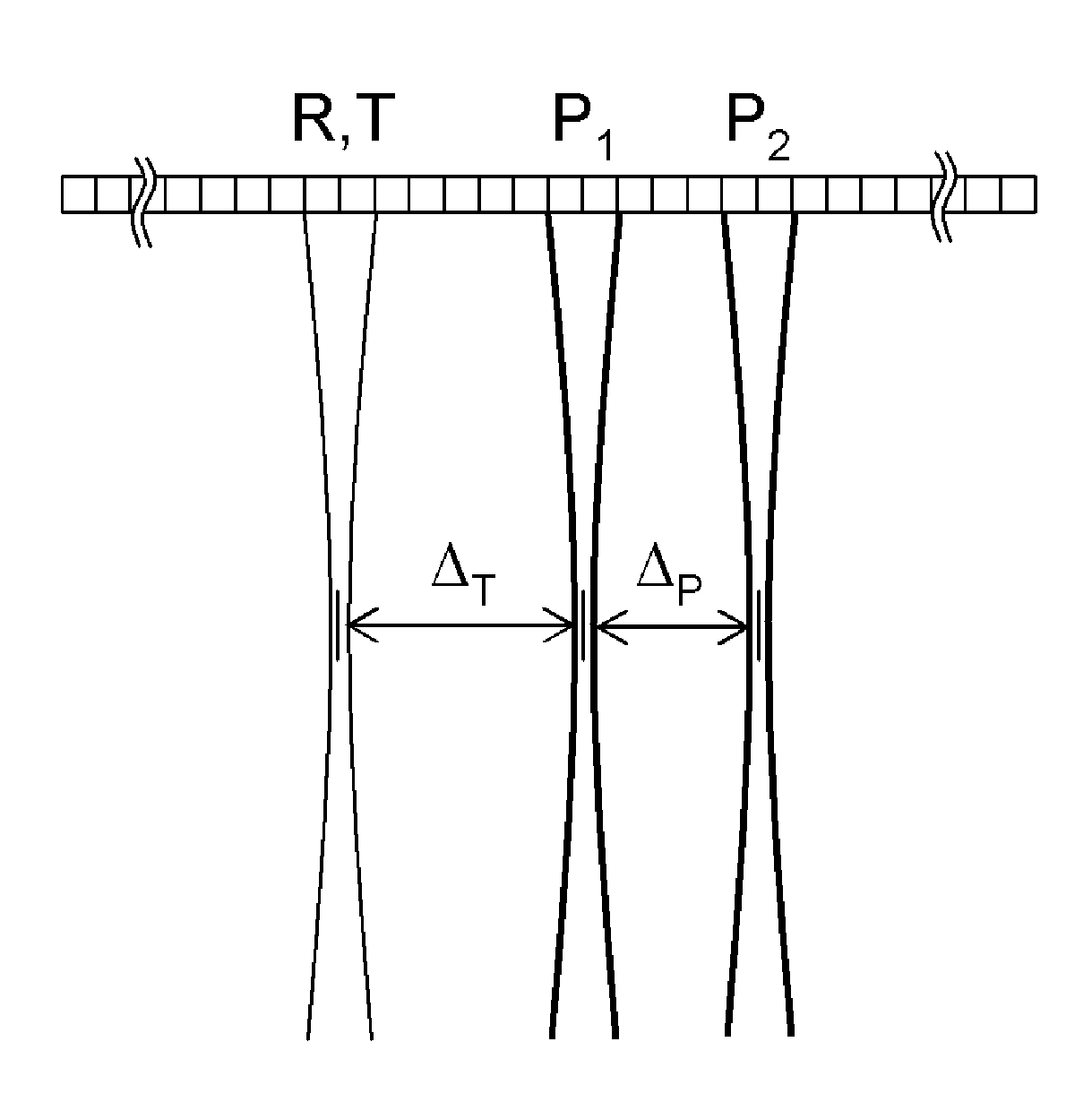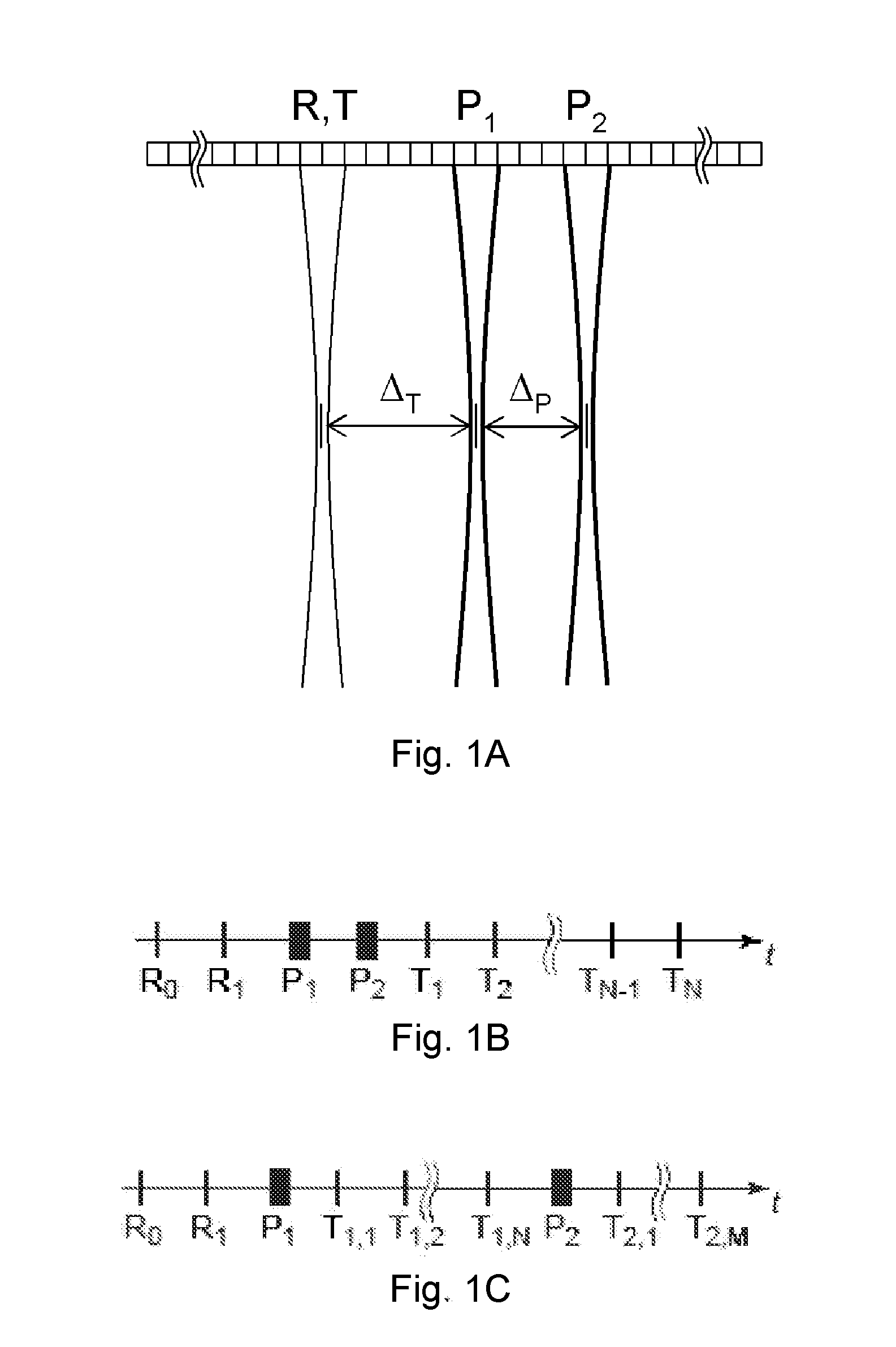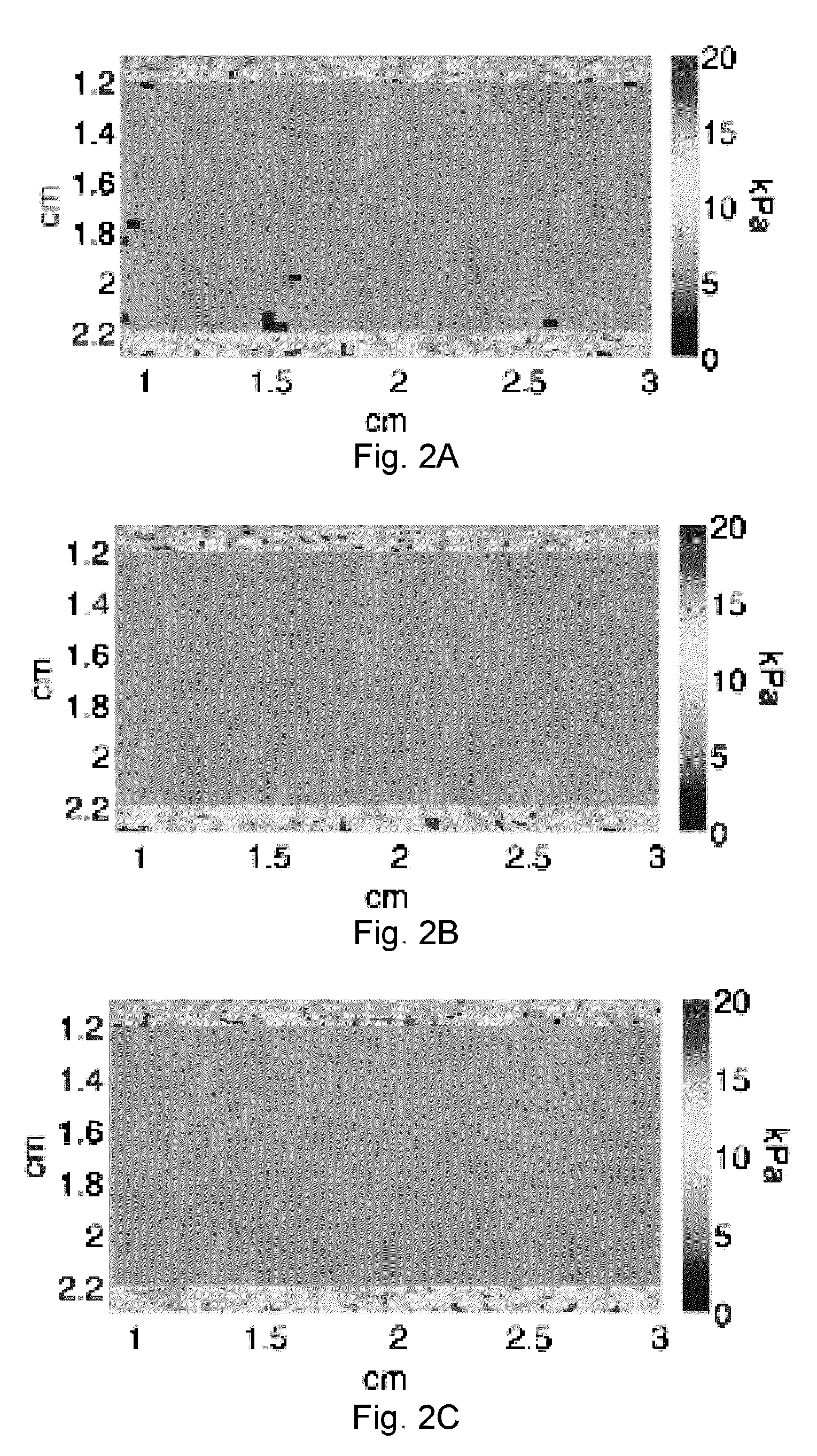Methods And Systems For Spatially Modulated Ultrasound Radiation Force Imaging
a radiation force imaging and spatial modulation technology, applied in the field of ultrasonic imaging, can solve the problems of introducing a time delay between each spatial peak of the push beam, the viscoelastic nature of the tissue, and the dispersion effect complicating the application of smurf in strongly viscoelastic media, so as to achieve the effect of convenient detection
- Summary
- Abstract
- Description
- Claims
- Application Information
AI Technical Summary
Benefits of technology
Problems solved by technology
Method used
Image
Examples
Embodiment Construction
diagram representation of the signal flow for the data acquisition procedure described in the text.
[0037]FIGS. 15A-15F: Left column 20 dB grayscale. Right column 40 dB grayscale. Top row: Boxcar (rect.) window applied. Center row: Hamming window applied. Bottom row: raised hamming window.
[0038]FIG. 16A is a simulated image of a 1 cm diameter lesion where the shear modulus of the lesion and the background are both 5 kPa. Image is on a 40 dB grayscale.
[0039]FIG. 16B is a simulated image of a 1 cm diameter lesion where the shear modulus of the lesion is 7.5 kPa and the shear modulus of the background is 5 kPa. Image is on a 40 dB grayscale.
[0040]FIGS. 17A-17B are images of nylon monofilament wires in a gelatin block as imaged by the shear wave method. The images are displayed on a 20 dB (FIG. 17A) or 40 dB (FIG. 17B) dynamic range grayscale.
[0041]FIG. 18 is an image of the hyperechoic cylinder in the gelatin block phantom reconstructed from experimental shear wave modulated data. The d...
PUM
 Login to View More
Login to View More Abstract
Description
Claims
Application Information
 Login to View More
Login to View More - R&D
- Intellectual Property
- Life Sciences
- Materials
- Tech Scout
- Unparalleled Data Quality
- Higher Quality Content
- 60% Fewer Hallucinations
Browse by: Latest US Patents, China's latest patents, Technical Efficacy Thesaurus, Application Domain, Technology Topic, Popular Technical Reports.
© 2025 PatSnap. All rights reserved.Legal|Privacy policy|Modern Slavery Act Transparency Statement|Sitemap|About US| Contact US: help@patsnap.com



